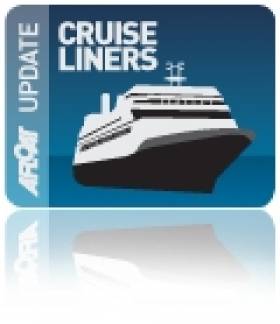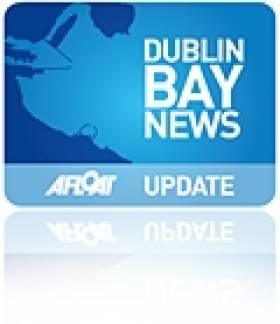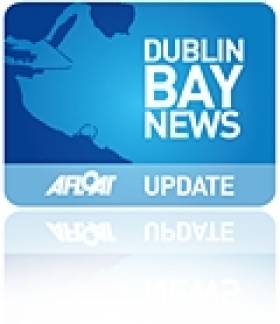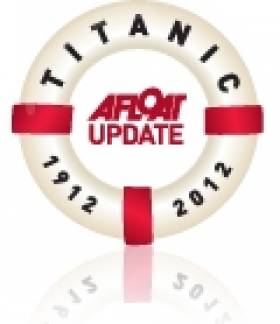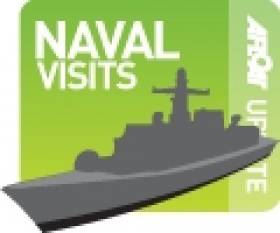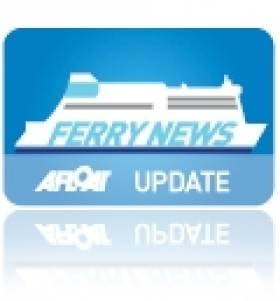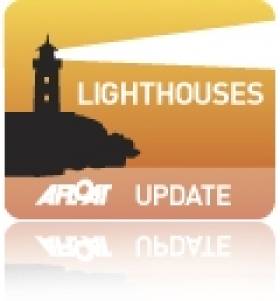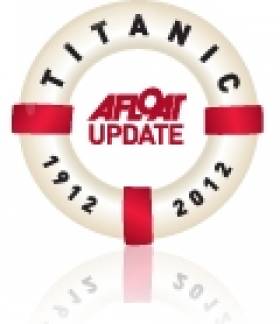Displaying items by tag: Dun Laoghaire Harbour
Cruise Call Opens New Opportunities for Dun Laoghaire Harbour
#CRUISE CALLS - The docking of the Quest in Dun Laoghaire Harbour this morning marks the first phase of cruise calls this summer as part of a new development to attract cruiseships, writes Jehan Ashmore.
The opening of the cruise sector business which formed part of the Dun Laoghaire Harbour Company's Masterplan is seen as a significant boost to the local economy considering the declining operations of the HSS fast-ferry service in recent years.
The Quest which is operated by Noble Caledonia is on a 9-night 'Garden' Cruise of the UK and Ireland, where prices started from £3,295. She berthed at the Carlisle Pier where for many generations passengers boarded the mail-boats followed by the conventional ferry to Holyhead which last left the route in 1996.
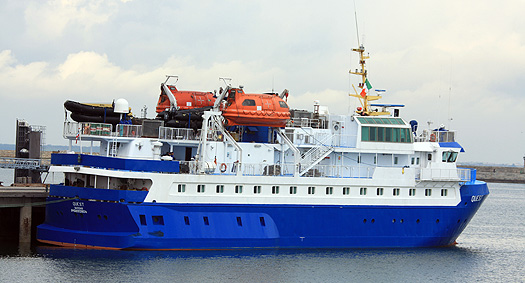
Quest along side in Dun Laoghaire. She carries 50 passengers
At just under 50m long the Quest carries only 50 passengers though this number is set to increase when a further four cruise calls are scheduled this season with larger vessels capable of carrying around 500 passengers.
#CRUISELINERS – The Quest (1992/1,180grt) an ice-strengthened expedition cruiseship, will have the distinction of being the first cruise caller to Dun Laoghaire Harbour in many years. The cruise call next week (24th April) will mark a new era in attracting the cruise sector as part of the harbour's masterplan launched last year, writes Jehan Ashmore.
The Quest will have a German clientele of around 50 passengers, though other larger capacity vessels are scheduled for the summer in this first phase of cruise callers. The cruise sector season is seen to be a significant economic boost to the local economy considering the reduced ferry side of the harbour business in recent years.
Passengers on the Noble Caledonia operated vessel are to take a 9-night 'Garden' Cruise with prices starting from £3,295. She is to set sail from Oban Scotland, then to Ireland, Wales, Cornwall, the Isles of Scilly and Channel Islands.
On her Dun Laoghaire call passengers will head for Powerscourt and nearby Mount Usher gardens in Co. Wicklow. On the second Irish port of call to Waterford as previously reported, they will visit the privately owned Mount Congreve Gardens on the banks of the River Suir.
Notably scheduled in for next year's season is the 'flagship' of the Cunard Line fleet, the 2,620 passenger liner Queen Mary 2, all of 151,400 gross tonnes. She is to make an anchorage call in May 2013, according to Captain Frank Allan, Dun Laoghaire Harbourmaster.
As part of the programme to attract and develop Dun Laoghaire as a cruise call port of call, a new tender docking facility was recently completed. The facility is designed to cater for large cruiseships using the harbour as it will cater for easier access by boats tendering passengers to vessels such as Queen Mary 2 during anchorage calls out in Dublin Bay.
The new tender facility will also benefit the public as the facility can be used for training purposes and for the operation of boat tours around Dublin Bay and trips out to Dalkey Island.
- Dun Laoghaire Harbour
- Cruise Liners
- Irish cruise calls
- Noble Caledonia
- MVQuest
- Cunard Line
- Queen Mary 2
- QM2
- Dun Laoghaire Harbour Company
- Dublin Bay
- Dublin Bay anchorage cruise calls
- Dalkey Island
- Powerscourt Gardens
- Mount Congreve Gardens Waterford
- River Suir
- Dun Laoghaire Harbour Masterplan
- Dublin Bay News
Councillors to Consider New Dun Laoghaire Harbour Sea Baths
Funding for a new sea baths located inside Dun Laoghaire harbour on Dublin Bay will be considered tomorrow by Dun Laoghaire Rathdown County Councillors. The new sea baths proposal is part of Dun Laoghaire harbour company's master plan launched last June that envisages the creation of up to 1000 jobs but has drawn the ire of local yacht clubs. The proposed position for the new sea baths is on the East pier directly in front of the National Yacht Club.
The councillors are being asked to allocate €1.5 million for the new facility in spite of the fact the victorian Dun Laoghaire baths remains derelict after over 20 separate council plans have failed to rejuvinate it to date. In the past week the derelict site has had a makeover thanks to a Dulux 'Lets Colour Project'.
An artists impression produced last November shows some of the proposed changes for the harbour.

An artist's impression of the new Sea baths on the East Pier in Dun Laoghaire. Councillors will vote on a €1.5m funding allocation tomorrow
"The Masterplan will position Dun Laoghaire Harbour as a marine, leisure and tourism destination of international calibre", Gerry Dunne, Chief Executive Officer, Dun Laoghaire Harbour Company said last June.
Gerry Dunne will address the Councillors tomorrow night with oultine plans for the baths and the harbour masterplan.
"We need to spend an average of €5m a year on maintaining and developing the Harbour infrastructure. The Masterplan will involve investment of more than €230m, over the next 10-15 years and will result in 1000 sustainable jobs in areas such as tourism, marine service companies, select retail, and food and beverage." the CEO said.
Easter Sunday Marks Rebirth of Mariners Maritime Museum
#MARTIME MUSEUM AT EASTER - Earlier this week Dun Laoghaire's maritime museum re-opened its doors to the public after a €4m renovation project was carried out on the apt venue of the former Mariners Church, which incidentally closed on this Easter Day forty years ago, writes Jehan Ashmore.
With a new lease of life the extensively renovated and upgraded museum can look forward to a future. Visitors enter the museum at a new entrance, where in the reception foyer there is a souvenir shop, beyond that in the main body or nave are exhibits displayed, each telling a story and for children there is a Knott Station. To view the initial exhibits on display, click HERE.
In addition there is new facility in the form of a café, which was much needed and where two new stained -glass windows by Peadar Lamb feature, they were sponsored by the Dun Laoghaire Harbour Company. As for the original stained-class windows they were restored to their full glory.
The renovation began in 2006 and was funded by the Government which led to a three-phrased project that involved work carried out from the re-roofing right down to the floorboards. Walls were re-plastered, electric systems modernised and wheel chair-lift and ramps installed.
Work also took place to clean the exterior of the stone-cut granite building hewn from Dalkey Quarry and which led to the consecration of the Kingstown Episcopalian Mariners Church in 1843.
After many generations of mariners and their families, parish numbers dwindled and its use as place worship ended on Easter Sunday 1972. The Maritime Institute of Ireland which runs the museum relocated two years later having had a smaller museum sited along the town's harbour waterfront.
For the next three decades the museum which has attracted locals and visitors from home and overseas, eventually had to close due to deteriorating conditions of an aging building.
Now that the museum is up and running, the M.I.I. which is staffed by volunteers has in recent years also had the support of a FAS scheme of workers, which according to the institute have been invaluable.
The museum is open 11am to 5pm Tuesday to Sunday and every Bank Holiday, for further information visit: www.mariner.ie
Music & Talk Tribute to Titanic
#TITANIC – The Maritime Institute of Ireland is to host a musical tribute and illustrated talk to mark the centenary of the Titanic shipping disaster. The evening event (starting at 8pm) is to be held on Thursday 12th April in the Maritime Museum, Dun Laoghaire.
The musical tribute will be led by uillinn piper Eamon Galdubh – similar music to that played in the 2nd and 3rd class compartments on the Titanic. The illustrated talk will be presented by well-known deep sea diver Rory Golden, the first Irishman to see the wreck of the Titanic. He was also the first person to touch the ship's wheel since the ship's Captain did in 1912.
Tickets for the event are available at €10 each (concessions €5) from Costello Jewellers, 1 Northumberland Avenue, Dun Laoghaire. In addition tickets can be purchased from the museum which is to reopen to the public next week on Tuesday 3rd April. For more visit www.mariner.ie
Sistership of Figaro Race ‘Guardship’ to Visit
#NAVAL VISIT – A sistership of the French Naval patrol vessel that performed 'guardship' duties during last year's La Solitaire du Figaro Race to Dun Laoghaire (click HERE), is due to dock in Dublin Port in advance of St. Patrick's weekend, writes Jehan Ashmore.
PSP Pluvier (P678) is a 54m offshore patrol vessel (OPV) that belongs to a trio of the'Flamant' class, the remaining pair are the leadship PSP Flamant (P676) and PSP Cormoran (P677). The latter OPV escorted the race fleet on the second leg between Ouistreham (Caen) to Dun Laoghaire, the only international port of call of the prestigious race.
The naval visitor is the last of the sisters built and was constructed in Cherbourg at Chantier des Constructions Mécaniques de Normandie (CMN). She entered service in 1997 and carries out patrols in seas up to 200 nautical miles offshore of the French économique exclusive zone (ZEE).
She is scheduled to arrive on Thursday afternoon and berth at Sir John Rogersons Quay, downriver from the Samuel Beckett swing-bridge.
Countdown to the Return of the HSS
#FERRY NEWS-A month from today sees the resumption of fast-ferry sailings on the Dun Laoghaire-Holyhead route, operated by Stena Line's HSS Stena Explorer, writes Jehan Ashmore.
The 120 minute central-corridor route closed in mid-September due to consistent high operating costs in recent years. This led to the withdrawal of the fuel-thirsty HSS craft which is powered by four gas-turbine engines.
In addition most of the route's turnover was generated in the high season months, leaving the remaining months unsustainable. As such the company decided to make the service as a seasonal-only operation. To read a previous report of the closure click HERE.
The ending of the year-round-service was the first major break to the route since the introduction of the pioneering HSS Stena Explorer in 1996 which in turn had replaced conventional tonnage. The Finnish built craft was the first of a trio of sisters commissioned for Stena Line and only this vessel remains in service for the operator.
Also operating on the route in recent years was the smaller fast-ferry craft Stena Lynx III which had served several high and low seasons, though she will not be joining her larger fleetmate. The Tasmanian built Incat fastcraft was sold last year to South Korean interests as previously reported on Afloat. ie
Meanwhile the company's Dublin-Holyhead route is maintained by conventional tonnage vessels, Stena Adventurer and Stena Nordica which operate the 3 hour 15 minute service.
Arklow Newbuild’s Link to Former Irish Lights Tender
#FORMER IRISH LIGHTS TENDER -With the Guardian 8 preparing to set sail from her builders homeport of Arklow this month, as previously reported on Afloat.ie, her owners Gardline Marine Services also operate a former Commissioners of Irish Lights tender, writes Jehan Ashmore.
The Great Yarmouth based company operate a multi-purpose fleet which includes the survey vessel Ocean Seeker (PHOTO). She was a familiar sight as the ILV Granuaile (1970/1,943grt) while serving for three decades from the Irish Lights marine depot in Dun Laoghaire Harbour.
Built by Fergusan Brothers of Port Glasgow, she was the last traditional tender for CIL in that her working deck was positioned forward. Apart from the short career of the Gray Seal, the 2000 built successor ILV Granuaile (the third to carry the name of the Mayo pirate queen) was the first custom built tender for CIL to introduce a radical design with an aft end work deck.
Maritime Institute's Museum to Host 'Titanic Centenary' Presentation
#TITANIC-The Maritime Institute of Ireland is to hold a 'Titanic Centenary' event in their maritime museum, Dun Laoghaire on Thursday 12th April (starting at 8pm) noting doors open from 7.30pm.
The first Irish diver to see the wreck from a Russian MIR submersible, Rory Golden will provide an illustrated talk on the latest revelations through an audio-visual presentation. Golden's first Titanic experience was on an expedition in 2000, which yielded hundreds of artefacts.
To ensure a place of the ticketed event, bookings can be made from Linda from the maritime museum's shop Tel: 01 214 3964 (on the top floor of the Dun Laoghaire Shopping Centre) as the museum itself is not due to re-open until early April as previously reported on Afloat.ie.
Alternatively tickets can be booked at Costello Jewellers, 1 Northumberland Avenue, Dun Laoghaire Tel: 01 230 2311 (messages) and Barney Yourell, Lectures Officer of the institute by calling Mob: 087 900 7466. Tickets cost €10 each and concessions for senior citizens and unwaged etc are priced at €5. For further information contact Mob: 086 074 5402 and by visiting www.mariner.ie
Lecture: Round Ireland 2011 Over Two Months
#MARITIME LECTURE - This 'Thursday's Night Talk' organised by the Dun Laoghaire Motor Yacht Club (DMYC) is entitled 'Round Ireland 2011 Over Two Months'. Tomorrow's talk starts at 8pm and is to be presented by Gary Owens.
None members are also welcome to attend the winter lecture talks, held on Thursdays which will continue until April, noting the theme of the talks are not exclusively marine orientated. For further information Tel: 280 1371 and by visiting www.dmyc.ie
The DMYC is situated on the West Pier, close to Salthill and Monkstown DART station and car-parking is available beside the premises and also at the nearby Coal Harbour.


























